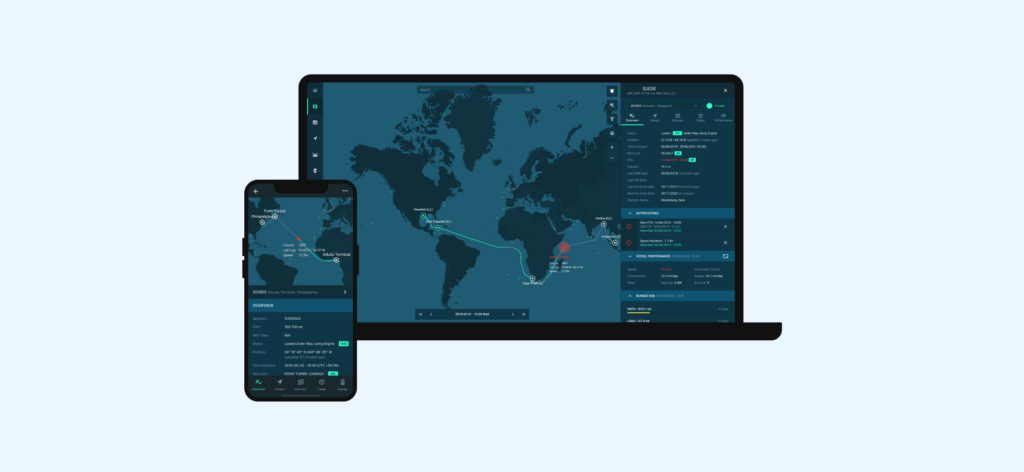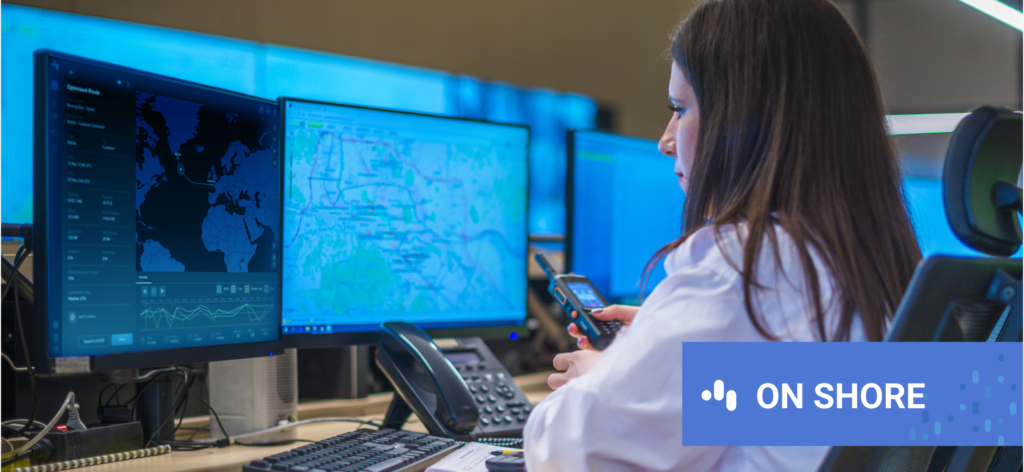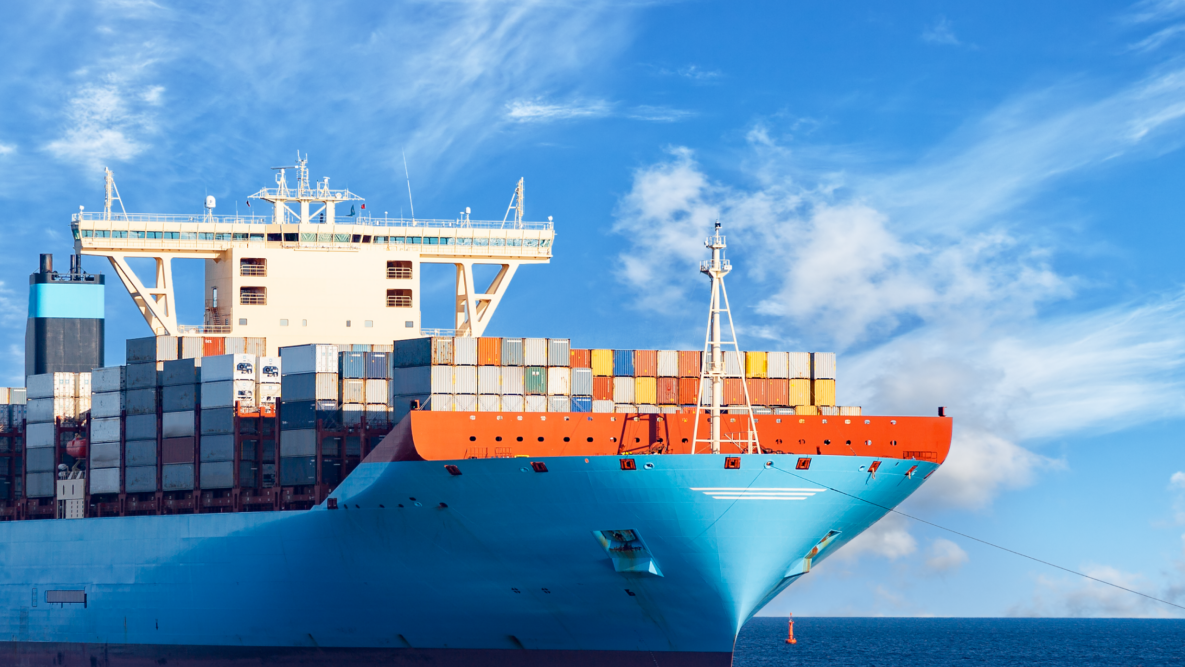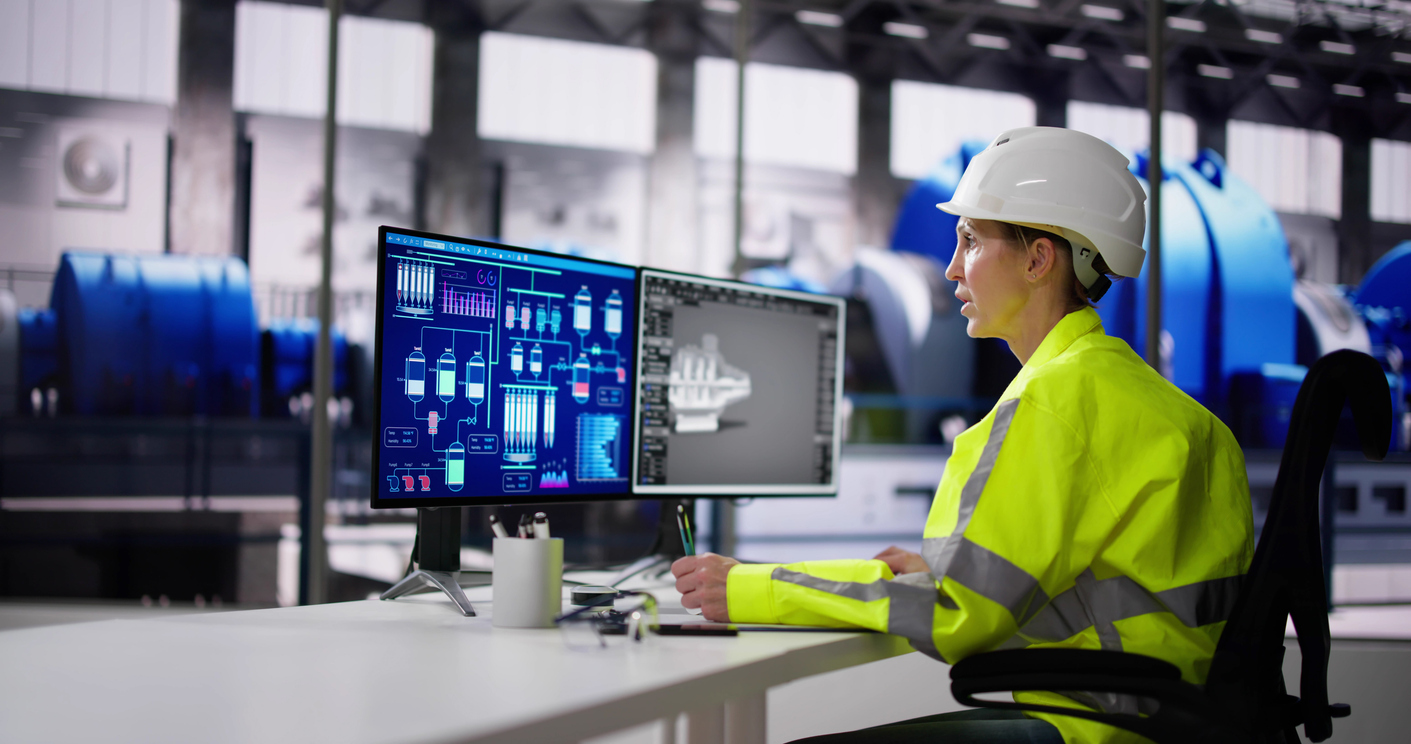As the world becomes more mindful of sustainability issues, it’s imperative for the maritime industry to do its part in building a more sustainable future and reach Net Zero goals by 2050. Steering the international maritime industry towards decarbonization is an opportunity for industry leaders to build solutions that contribute to zero-carbon shipping.
Guided by these ambitions, HTEC Group has partnered with some of the global leading shipping companies to help address this burning issue and help them understand and succeed on their decarbonization pathways.
To explore this topic and demystify the strategy behind this ambitious goal, we caught up with Andrija Stojkovic, Product Innovation Office at HTEC Group, who has extensive experience in helping maritime companies build sustainable solutions and accelerate decarbonization globally. In this blog post, he shares his perspective on what it takes for maritime companies to achieve sustainability goals and how HTEC Group efforts have helped companies progress toward a greener future.
How can innovation and technology improve environmental and logistics operations in maritime?
Technology and innovation enable us to make a transition from a “message in a bottle” to a whole new way of working that serves to predict and optimize day-to-day operations. To help clarify the strategy behind this ambitious goal, Andrija explains the current status of short-term, mid-term, and long-term plans for decarbonizing the Shipping Sector by 2055, dictated by IMO:
- Short-term plans have been implemented from 2013 until now
- Mid-term plans are expected to be implemented by 2030 – the goal is to achieve decarbonization of 40% of the entire fleet
- A long-term plan is to reduce the carbon intensity of the fleet, which should contribute to the ultimate goal of achieving a 50% reduction by 2050.
Andrija continues,
“Having in mind all the deadlines to reduce Green House Gasses (GHG), I am confident that the digitalization of the industry is a must and not a choice.”
What approaches do companies take to achieve the desired goals?
There are multiple approaches to achieving desired goals. From Andrija’s point of view, these are the key approaches companies should take to reach success on their journey:
- Vessel upgrades (engine, hardware)
- Innovation of new vessel design, engineering, and manufacturing
- New fuel types
- Industry digitalization and innovation
Andrija emphasizes that “both physical upgrades and digital innovation parts need to find a way to match the upcoming challenges.”
Why are maritime decarbonization barriers so significant, and how can we help?
HTEC Group as a company has already proved itself to be a valuable partner in the industry afor supporting Green initiatives, achieving tangible results through digitalization and performance enhancement. Andrija adds:
As domain experts, we are able to uncover our clients’ untapped growth and transformation opportunities through partnership. Together, we are creating innovative digital solutions to promote sustainable development in the maritime world for our clients to become:
- Sustainable (Reach targets before 2050)
- Operative (Achieve operational excellence)
- Precise (Use accurate data leading to reliable predictions)
Andrija also touches upon the specific actions HTEC takes to scale up and overcome outdated and redundant processes:
- Streamlining workflows
- Improving operational processes
- Eliminating redundant systems
- Driving transparency between departments
- Unlocking business value through precise and accurate data
- Creating a SaaS solution as a Single Source of Truth
He adds,
“Through this set of activities, we also create learning opportunities from data, enabling clients to make predictions and precise decisions with the ultimate goal of achieving vessel compliance and enhancing their utilization. Our client’s words speak of our success: “Instead of waiting to look up information, we will be able to get it upfront. Moreover, outputs enhanced by machine learning and AI will help us make better-informed decisions.”
HTEC’s work in the maritime industry, in particular creating a complete modular E2E SaaS solution, brought them a huge increase in profit in just 2 years and significantly reduced their CO2 emissions. Can you tell us more about how we helped the client reach their goal?

Andrija emphasizes that teamwork was one of the critical factors for success here. He explains,
“We worked together with our clients as one team, to clearly define their goals. Through live workshops with different teams of specialists, live interviews, and Product Discovery sessions, our team was able to help our partners define the problem and provide a digitalization plan to achieve the desired targets: Transparency, Security, Efficiency, and Intelligence. With defined targets, our output was a complete platform solution, with an efficient real-time vessel tracking and performance interface, powered by Big Data and integration options.”
Andrija explains that the team leveraged the full potential of technology to ideate solutions that would help different departments achieve overall operational efficiency. In our client’s words: “I was impressed by how the HTEC team asked themselves a very important question: How to use technologies at the edge of their capability and serve many different departments?”
Andrija adds that from a Product and Design perspective, the team always strives to learn as much as they can about the domain, market and competition, current challenges, stakeholders, customers, and end-users’ needs trying to answer critical questions:
The Why: Why should it exist, and why is it better than already proposed solutions (if any)?
The What: What value will it provide from both stakeholders and end-users perspective. What challenges should it address, and which tasks should it be able to complete?
The How: Is it feasible, within the budget and timeline, and how do we measure the success of it?
Andrija says,
“It is only when you have specific research insights that you become able to make decisions about the path the digitalization process should take.”
We made the platform that corresponds to 2 user groups where we bundled all the necessary features that could benefit them in their daily jobs to increase performance:

On Shore — Voyage Optimization brings real intelligence to maritime operations, making the fleet compliant and dramatically reducing fuel consumption and CO2 emissions.

On Vessel — Performance Monitoring is a solution designed to meet all the captains’ and crews’ needs and unify all data in one interface, optimizing voyage performance and reducing risks.
Both should correspond to the end goals we defined:
- Sustainability (compliance and insurance)
- Utilization (operations and chartering)
Through such a transparent and honest relationship with our clients, we managed to gain their utmost trust, which gave us the opportunity to participate in shaping their new Business models. Andrija points out that “this is the essence of the amazing results we achieved, together with a clear roadmap and the ability to quickly assemble a team of handpicked domain experts from HTEC.”
When it comes to workflows, gaps, and improvements, one of our stakeholders described HTEC’s contribution to this huge endeavor.
“We started a collaboration with HTEC Group as we recognized their tremendous potential and extensive expertise in product discovery and product development. They are designed to build sustainable, enduring, and globally scalable products.”
HTEC Group, as a company, has already proven its place in the industry as a valuable partner for supporting Green Initiatives. As domain experts, we are able to uncover our clients’ untapped growth and transformation opportunities through partnership. Together, we are creating innovative solutions that promote sustainable development in the maritime world while empowering our clients to become sustainable, operative and precise.
– Andrija Stojković
Product Innovation Office at HTEC Group
How does route optimization contribute to maritime decarbonization, and where do you see HTEC’s contribution in this domain?
Based on inputs from maritime experts, improvement in vessel efficiency will affect around 50% of decarbonization. This includes new fuels and new ships, but also voyage and trading pattern efficiency. A thorough analysis of the existing workflows and finding gaps for improvement is of key importance here.
According to Andrija, operational departments have a big challenge ahead of them to improve the ways of working that have been used for quite some time. With additional information available now from vessel tracking, route optimization, weather predictions, and port congestions, maritime experts can navigate vessels in the highest possible optimal manner. Andrija explains,
“For example, if the port is to be congested in the upcoming period, a vessel can be ordered to steam with a lower speed (consuming less) and arrive “just in time” for its planned port activity. In that way, the vessel avoids unnecessary waiting outside of the port and decreases the emissions during the anchorage period, thus increasing the efficiency of the voyage itself.
This way, operators can influence the vessel speed as described, but also the route itself. With precise weather information, operators can advise captains from shore, making the right decisions together, avoiding the rough weather, and ensuring that the vessel is safely and optimally steaming toward the planned ETA.
Thanks to the data acquired over the years of vessels’ tracking and analysis, users of the system now have a way to find the trading patterns. Comparison of those trading patterns gives the user the ability to predict the efficiency of the trading challenges in a specific area. Imagine being able to use these improved processes throughout your entire fleet while constantly being connected with all other departments such as chartering, demurrage, claims, etc.”
What role do data analytics and data scientists have in achieving this goal?
Sole tracking of emissions is insufficient if the company wants to lower the environmental footprint and turn new regulations into a competitive advantage. Companies should leverage the power of data to be able to predict and simulate different “what if” scenarios.
From Andrija’s standpoint, it all starts from multiple data sources that come from 3rd party integrations, vessel sensors, and satellites. Digitalized information, stored in a proper way and cleaned from noise, gives us the foundation for any kind of analytics. He highlights the impact HTEC’s data science department had when it comes to this particular aspect:
“I think of our data science team as a group of activists with a goal to clean the dirty ocean and design a better world based on sustainability, purpose, and human-centeredness. It is magnificent what they can do with all the data we inherit or gather. They provide us with filtered, clean, and precise figures and facts.
The possibility to anticipate or quickly react and make better decisions, predict, and provide accurate routing would not be possible without this department, and luckily HTEC has some real experts in this field! Building intelligent routing models is great proof of their deep domain knowledge and dedication to creating solutions that would contribute to this goal. I’m truly honored to have the opportunity to work with them.”
What is your key message to the World Climate Summit stakeholders regarding a more sustainable future and achieving Net Zero goals?
Andrija says he is impressed with what has already been achieved in the (very much) traditional maritime industry. There have already been some major innovations on the sustainability front he is fascinated and inspired by, such as competition tracking, market intelligence, and learning from patterns. But there is more to be done to reach the desired outcome.
He explains,
“We see that a lot of eyes are now open to this problem and are looking for the solution. It’s great that the goals are set and that we have the ability to work together to achieve them. I think that the key to success is to get everyone onboard with this initiative.”
What are the lessons learned, and what should be the next steps?
Andrija believes that although the industry has been successful in enhancing its environmental performance, the next step is to encourage everyone, from large shipowners to small technical manager companies, to unite around the same goal and focus their efforts on building sustainable solutions that would get us closer to meeting Net Zero targets. Backed by his extensive experience and lessons learned from building an enterprise-scale platform for the Maritime industry, Andrija emphasizes that there is only one way to do this:
“I would say there is only one way to do this: Digitize -> Share -> Learn -> Go green!”
Finally, our actions speak louder than words. Our client has described this perfectly:
“Our teams collaborated on all the phases of product development, from strategic planning and industry assessment, through product discovery, development, and innovation, to building a mission-impossible control deck with a beautiful UI that allows for real-time vessel visualizations, to finally supporting continuous integrations with new partners and clients. In this capacity, we have designed and delivered a platform that integrates with existing maritime software solutions, allowing maritime enterprises to utilize information from various sources and tools.”
—
Stay tuned for an upcoming blog, where we will dive deeper into the steps we took to successfully launch the maritime and intelligence product and how it enabled us to participate in shaping our client’s new business models.
In the meantime, connect with our Andrija Stojkovic to learn how we can help you chart your shipping’s path to carbon zero.






